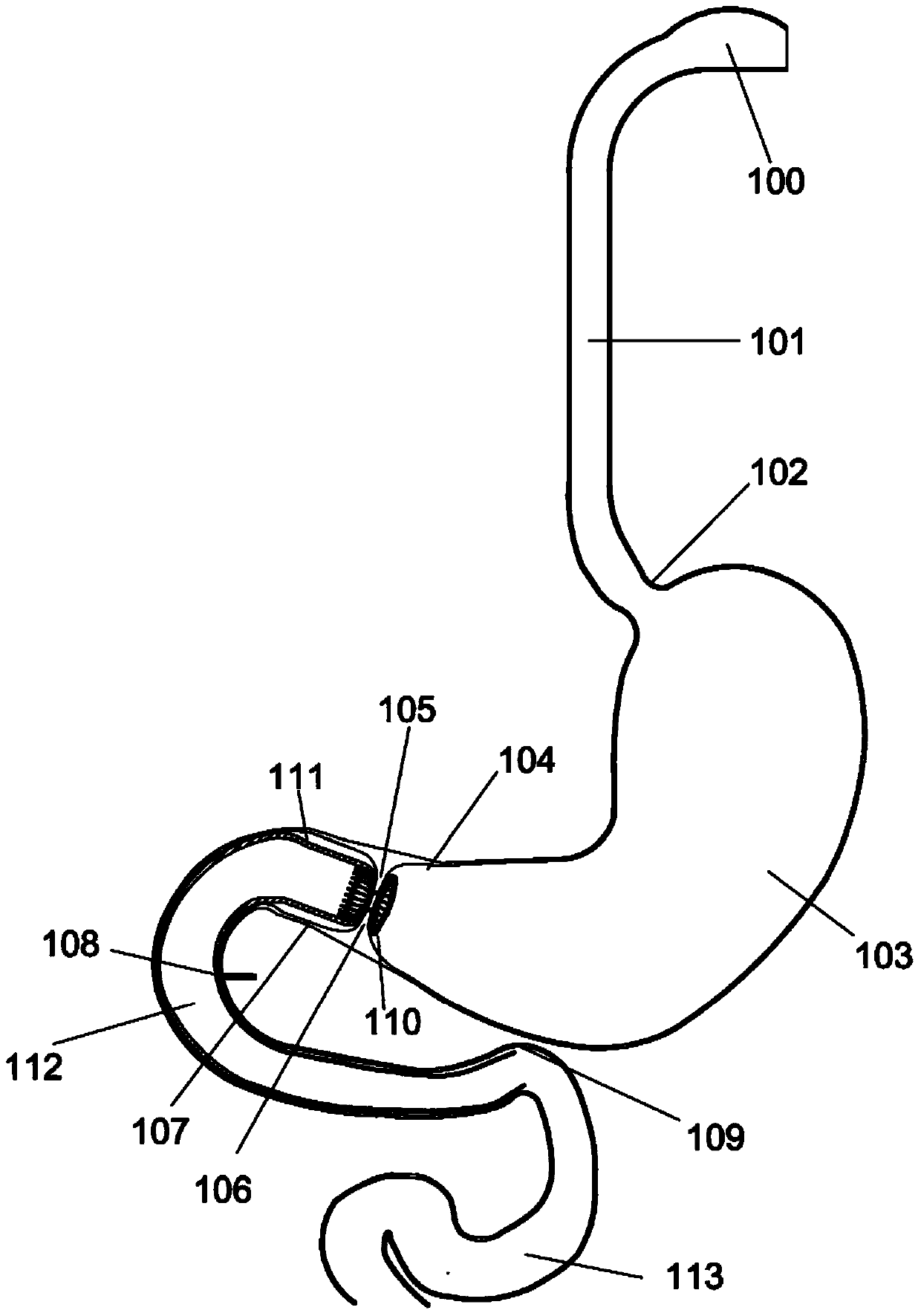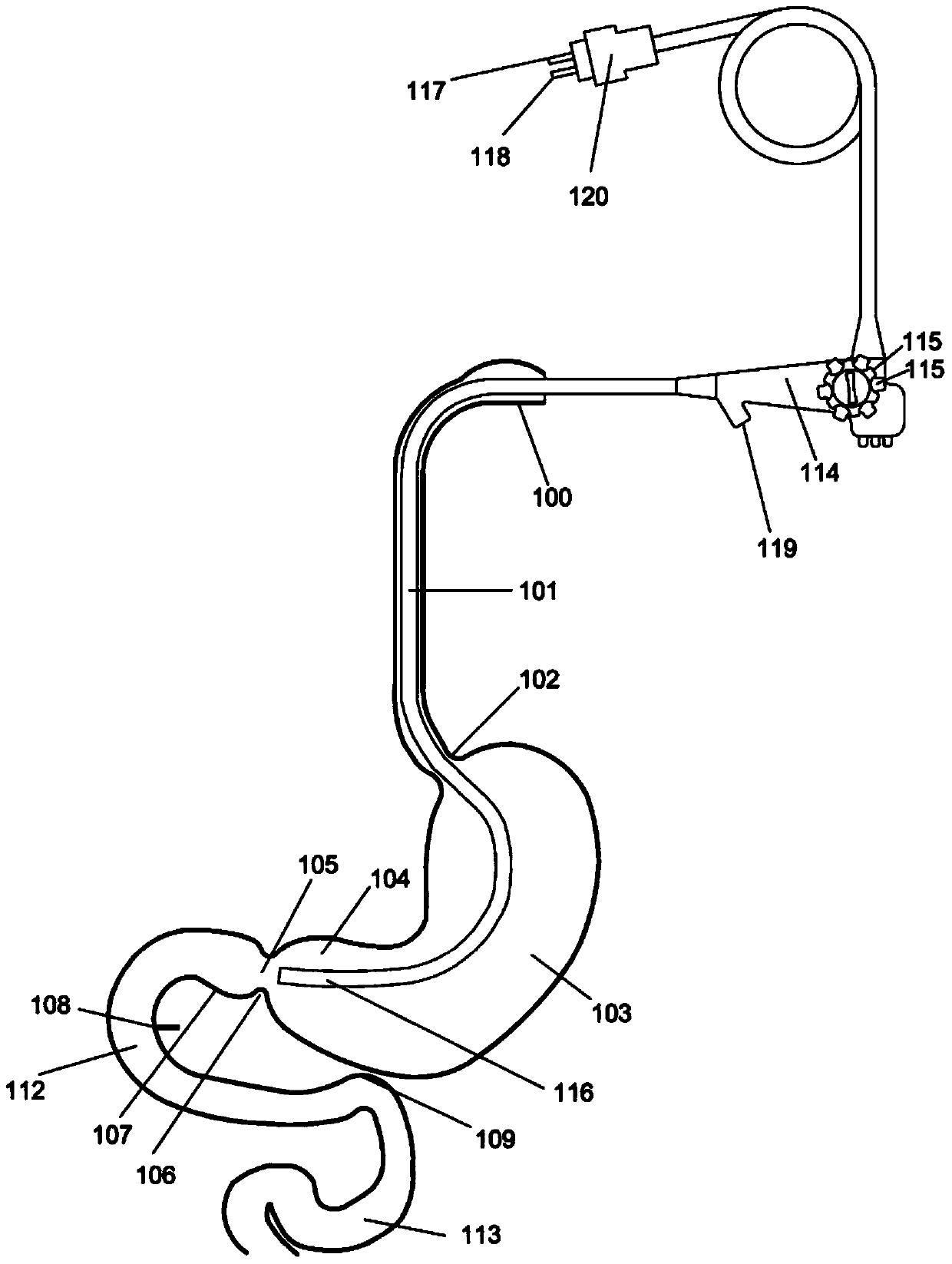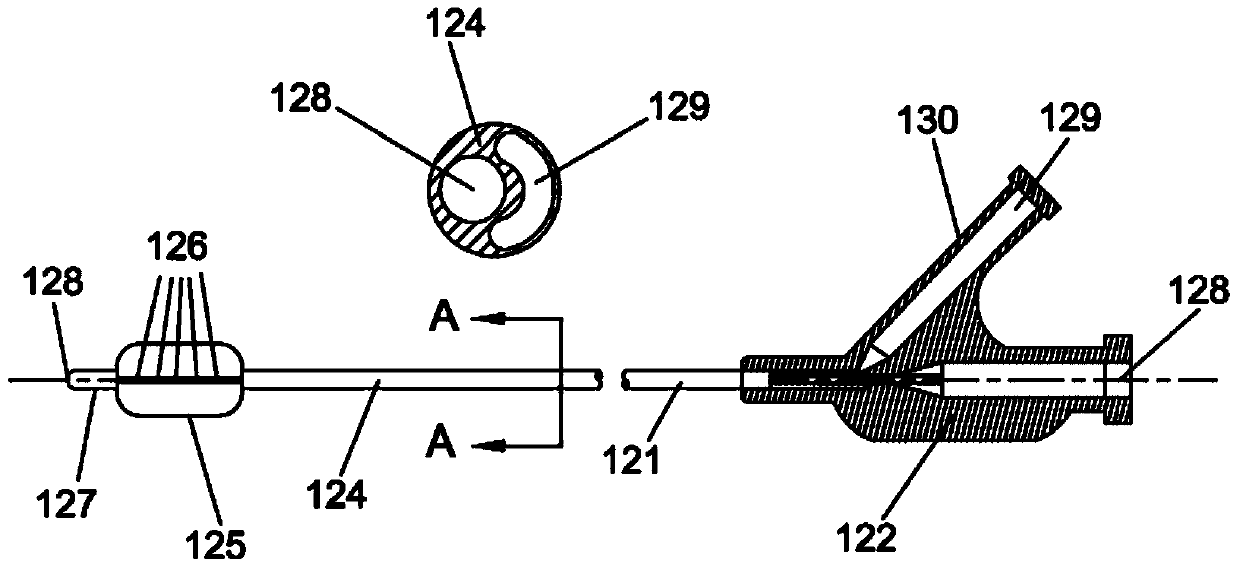Anchors and methods for intestinal bypass sleeves
A cannula, gastrointestinal technology, applied in the field of implant systems, can solve problems such as implant migration, bacterial infection or system infection, tissue necrosis, etc.
- Summary
- Abstract
- Description
- Claims
- Application Information
AI Technical Summary
Problems solved by technology
Method used
Image
Examples
Embodiment Construction
[0138] figure 1 is a cross-sectional view of an embodiment of the invention implanted in a portion of the human digestive tract. When a person ingests food, the food enters the oral cavity 100 , is chewed, then travels along the esophagus 101 to the lower esophageal sphincter of the gastroesophageal junction 102 and into the stomach 103 . Food is mixed with enzymes in the mouth 100 and in the stomach 103 . Stomach 103 converts food into a semi-fluid substance called chyme. Chyme enters the pyloric antrum 104 and exits the stomach 103 through the pylorus 106 and pyloric foramen 105 . The pylorus (or pyloric sphincter) is a muscle group that regulates the diameter of the pyloric hole, thereby affecting the rate of chyme exiting the stomach. The pylorus (or pyloric sphincter) also has a width (or thickness), which is the distance the pylorus extends between the stomach and duodenum. In adults, the small intestine is about 21 feet long. The small intestine consists of three ...
PUM
 Login to View More
Login to View More Abstract
Description
Claims
Application Information
 Login to View More
Login to View More - R&D
- Intellectual Property
- Life Sciences
- Materials
- Tech Scout
- Unparalleled Data Quality
- Higher Quality Content
- 60% Fewer Hallucinations
Browse by: Latest US Patents, China's latest patents, Technical Efficacy Thesaurus, Application Domain, Technology Topic, Popular Technical Reports.
© 2025 PatSnap. All rights reserved.Legal|Privacy policy|Modern Slavery Act Transparency Statement|Sitemap|About US| Contact US: help@patsnap.com



